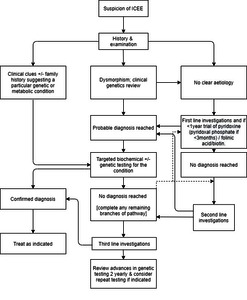Perry, LD;
Hogg, SL;
Bowdin, S;
Ambegaonkar, G;
Parker, AP;
(2021)
Fifteen-minute consultation: The efficient investigation of infantile and childhood epileptic encephalopathies in the era of modern genomics.
Archives of Disease in Childhood - Education and Practice
10.1136/archdischild-2020-320606.
(In press).

Preview |
Text (Accepted manuscript)
Perry_The_Efficient_Investigation_of_Infantile_and_Childhood_Epileptic_Encephalopathies_in_the_Era_of_Modern_Genomics - accepted ADC.pdf - Accepted Version Download (333kB) | Preview |
Preview |
Text (Supplementary table 1)
Supplementary table 1.pdf - Accepted Version Download (178kB) | Preview |
Preview |
Text (Supplementary table 2)
Supplementary table 2.pdf - Accepted Version Download (62kB) | Preview |
Preview |
Text (Supplementary table 3)
supplemental table 3.pdf - Accepted Version Download (155kB) | Preview |
![[thumbnail of Perry_figure 1 ADC.jpg]](https://discovery-pp.ucl.ac.uk/10118916/28.hassmallThumbnailVersion/Perry_figure%201%20ADC.jpg)  Preview |
Image
Perry_figure 1 ADC.jpg - Accepted Version Download (61kB) | Preview |
Abstract
The investigation of children presenting with infantile and childhood epileptic encephalopathies (ICEE) is challenging due to diverse aetiologies, overlapping phenotypes and the relatively low diagnostic yield of MRI, electroencephalography (EEG) and biochemical investigations. Careful history and thorough examination remain essential as these may identify an acquired cause or indicate more targeted investigation for a genetic disorder. Whole exome sequencing (WES) with analysis of a panel of candidate epilepsy genes has increased the diagnostic yield. Whole genome sequencing (WGS), particularly as a trio with both parents' DNA, is likely to supersede WES. Modern genomic investigation impacts on the timing and necessity of other testing. We propose a structured approach for children presenting with ICEE where there is diagnostic uncertainty, emphasising the importance of WGS or, if unavailable, WES early in the investigative process. We note the importance of expert review of all investigations, including radiology, neurophysiology and biochemistry, to confirm the technique used was appropriate as well as the results. It is essential to counsel families on the risks associated with the procedures, the yield of the procedures, findings that are difficult to interpret and implication of 'negative' results. Where children remain without a diagnosis despite comprehensive investigation, we note the importance of ongoing multidisciplinary care.
| Type: | Article |
|---|---|
| Title: | Fifteen-minute consultation: The efficient investigation of infantile and childhood epileptic encephalopathies in the era of modern genomics |
| Location: | England |
| Open access status: | An open access version is available from UCL Discovery |
| DOI: | 10.1136/archdischild-2020-320606 |
| Publisher version: | http://dx.doi.org/10.1136/archdischild-2020-320606 |
| Language: | English |
| Additional information: | This version is the author accepted manuscript. For information on re-use, please refer to the publisher's terms and conditions. |
| Keywords: | biochemistry, genetics, neurology |
| UCL classification: | UCL UCL > Provost and Vice Provost Offices > School of Life and Medical Sciences UCL > Provost and Vice Provost Offices > School of Life and Medical Sciences > Faculty of Population Health Sciences > UCL GOS Institute of Child Health UCL > Provost and Vice Provost Offices > School of Life and Medical Sciences > Faculty of Population Health Sciences > UCL GOS Institute of Child Health > Developmental Neurosciences Dept |
| URI: | https://discovery-pp.ucl.ac.uk/id/eprint/10118916 |
Archive Staff Only
 |
View Item |


